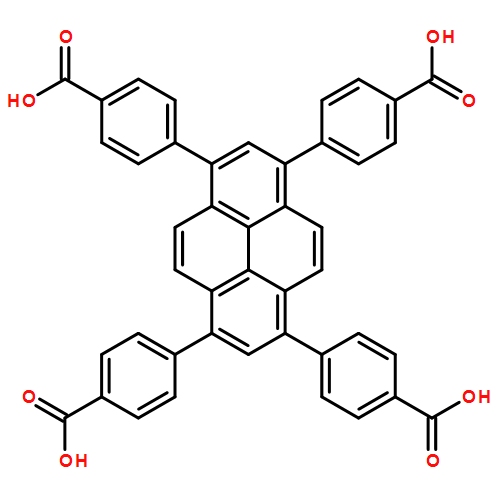Co-reporter: Zhanyong Li; Neil M. Schweitzer; Aaron B. League; Varinia Bernales; Aaron W. Peters; Andrew “Bean” Getsoian; Timothy C. Wang; Jeffrey T. Miller; Aleksei Vjunov; John L. Fulton; Johannes A. Lercher; Christopher J. Cramer; Laura Gagliardi; Joseph T. Hupp;Omar K. Farha
pp: 1977-1982
Publication Date(Web):February 2, 2016
DOI: 10.1021/jacs.5b12515
Developing supported single-site catalysts is an important goal in heterogeneous catalysis since the well-defined active sites afford opportunities for detailed mechanistic studies, thereby facilitating the design of improved catalysts. We present herein a method for installing Ni ions uniformly and precisely on the node of a Zr-based metal–organic framework (MOF), NU-1000, in high density and large quantity (denoted as Ni-AIM) using atomic layer deposition (ALD) in a MOF (AIM). Ni-AIM is demonstrated to be an efficient gas-phase hydrogenation catalyst upon activation. The structure of the active sites in Ni-AIM is proposed, revealing its single-site nature. More importantly, due to the organic linker used to construct the MOF support, the Ni ions stay isolated throughout the hydrogenation catalysis, in accord with its long-term stability. A quantum chemical characterization of the catalyst and the catalytic process complements the experimental results. With validation of computational modeling protocols, we further targeted ethylene oligomerization catalysis by Ni-AIM guided by theoretical prediction. Given the generality of the AIM methodology, this emerging class of materials should prove ripe for the discovery of new catalysts for the transformation of volatile substrates.
Co-reporter: Joseph E. Mondloch ; Wojciech Bury ; David Fairen-Jimenez ; Stephanie Kwon ; Erica J. DeMarco ; Mitchell H. Weston ; Amy A. Sarjeant ; SonBinh T. Nguyen ; Peter C. Stair ; Randall Q. Snurr ; Omar K. Farha ;Joseph T. Hupp
pp: 10294-10297
Publication Date(Web):July 5, 2013
DOI: 10.1021/ja4050828
Metal–organic frameworks (MOFs) have received attention for a myriad of potential applications including catalysis, gas storage, and gas separation. Coordinatively unsaturated metal ions often enable key functional behavior of these materials. Most commonly, MOFs have been metalated from the condensed phase (i.e., from solution). Here we introduce a new synthetic strategy capable of metallating MOFs from the gas phase: atomic layer deposition (ALD). Key to enabling metalation by ALD In MOFs (AIM) was the synthesis of NU-1000, a new, thermally stable, Zr-based MOF with spatially oriented −OH groups and large 1D mesopores and apertures.
Co-reporter: Dr. Peng Li;Dr. Nicolaas A. Vermeulen;Xirui Gong;Dr. Christos D. Malliakas; J. Fraser Stoddart; Joseph T. Hupp; Omar K. Farha
pp: 10358-10362
Publication Date(Web):
DOI: 10.1002/anie.201605547
Abstract
Ionic metal–organic frameworks (MOFs) are a subclass of porous materials that have the ability to incorporate different charged species in confined nanospace by ion-exchange. To date, however, very few examples combining mesoporosity and water stability have been realized in ionic MOF chemistry. Herein, we report the rational design and synthesis of a water-stable anionic mesoporous MOF based on uranium and featuring tbo-type topology. The resulting tbo MOF exhibits exceptionally large open cavities (3.9 nm) exceeding those of all known anionic MOFs. By supercritical CO2 activation, a record-high Brunauer-Emmett-Teller (BET) surface area (2100 m2 g−1) for actinide-based MOFs has been obtained. Most importantly, however, this new uranium-based MOF is water-stable and able to absorb positively charged ions selectively over negatively charged ones, enabling the efficient separation of organic dyes and biomolecules.
Co-reporter: Idan Hod; Wojciech Bury; Daniel M. Gardner; Pravas Deria; Vladimir Roznyatovskiy; Michael R. Wasielewski; Omar K. Farha;Joseph T. Hupp
pp: 586-591
Publication Date(Web):January 26, 2015
DOI: 10.1021/acs.jpclett.5b00019
The installation of ferrocene molecules within the wide-channel metal–organic framework (MOF) compound, NU-1000, and subsequent configuration of the modified MOF as thin-film coatings on electrodes renders the MOF electroactive in the vicinity of the ferrocenium/ferrocene (Fc+/Fc) redox potential due to redox hopping between anchored Fc+/0 species. The observation of effective site-to-site redox hopping points to the potential usefulness of the installed species as a redox shuttle in photoelectrochemical or electrocatalytic systems. At low supporting electrolyte concentration, we observe bias-tunable ionic permselectivity; films are blocking toward solution cations when the MOF is in the ferrocenium form but permeable when in the ferrocene form. Additionally, with ferrocene-functionalized films, we observe that the MOF’s pyrene-based linkers, which are otherwise reversibly electroactive, are now redox-silent. Linker electroactivity is fully recovered, however, when the electrolyte concentration is increased 10-fold, that is, to a concentration similar to or exceeding that of an anchored shuttle molecule. The findings have clear implications for the design and use of MOF-based sensors, electrocatalysts, and photoelectrochemical devices.
Co-reporter: M. Hassan Beyzavi ; Rachel C. Klet ; Samat Tussupbayev ; Joshua Borycz ; Nicolaas A. Vermeulen ; Christopher J. Cramer ; J. Fraser Stoddart ; Joseph T. Hupp ;Omar K. Farha
pp: 15861-15864
Publication Date(Web):October 30, 2014
DOI: 10.1021/ja508626n
Porous heterogeneous catalysts play a pivotal role in the chemical industry. Herein a new Hf-based metal–organic framework (Hf-NU-1000) incorporating Hf6 clusters is reported. It demonstrates high catalytic efficiency for the activation of epoxides, facilitating the quantitative chemical fixation of CO2 into five-membered cyclic carbonates under ambient conditions, rendering this material an excellent catalyst. As a multifunctional catalyst, Hf-NU-1000 is also efficient for other epoxide activations, leading to the regioselective and enantioretentive formation of 1,2-bifuctionalized systems via solvolytic nucleophilic ring opening.


